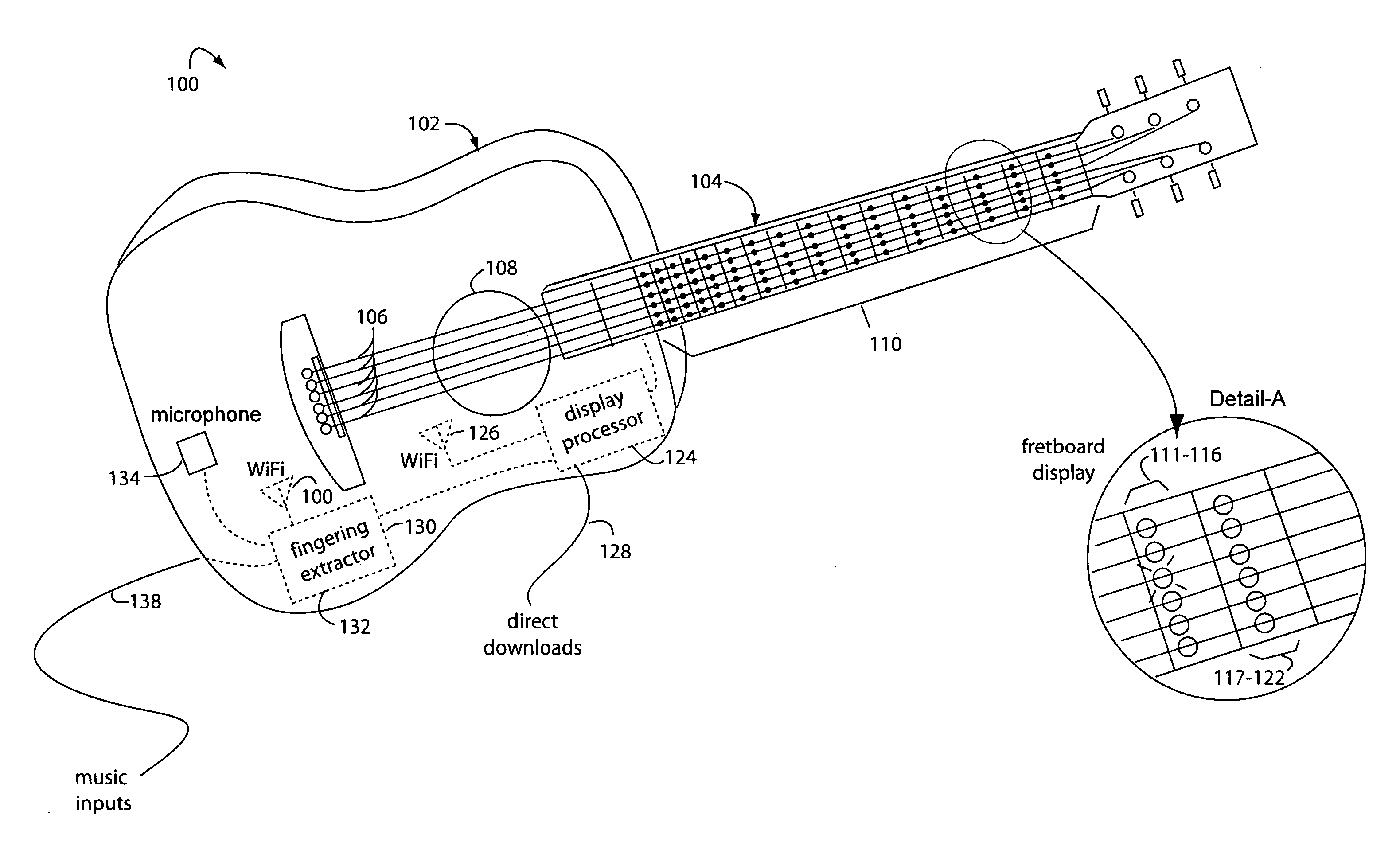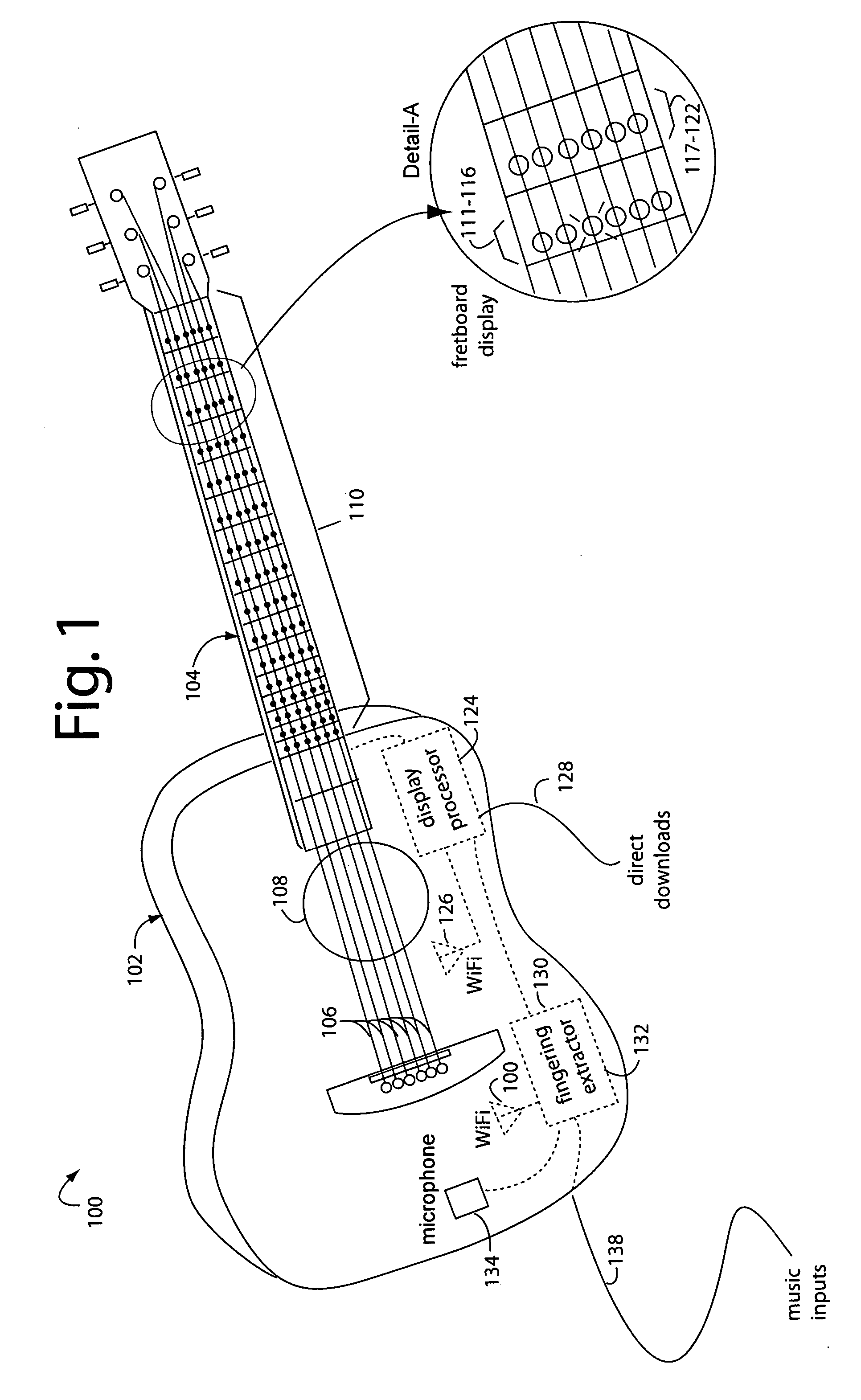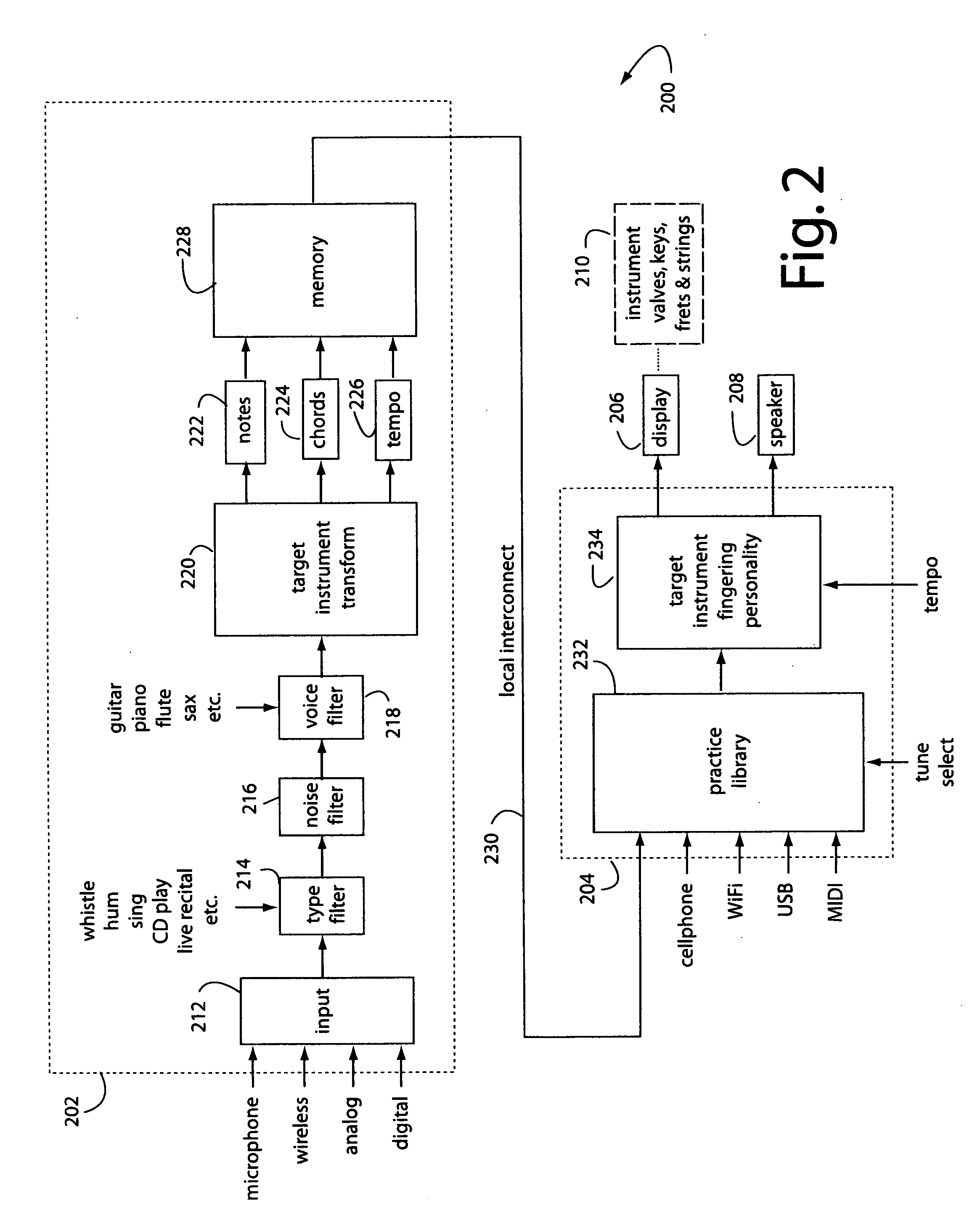Musical instrument fingering extraction and training
a technology for extracting and training instruments, applied in the field of musical instruments, can solve the problems of inflexible system, simple boring, and difficult to learn to read music, and then to apply it to a particular instrument,
- Summary
- Abstract
- Description
- Claims
- Application Information
AI Technical Summary
Benefits of technology
Problems solved by technology
Method used
Image
Examples
Embodiment Construction
[0026]FIG. 1 represents a guitar learning system embodiment of the present invention, and is referred to herein by the general reference numeral 100. The guitar learning system 100 comprises an acoustic guitar 102 conventionally equipped with a fretboard 104, strings 106, and a sounding hole 108. The most common tuning used is known as “standard tuning”, e.g., sixth (lowest) string: E (a minor thirteenth below middle C-82.4 Hz); fifth string: A (a minor tenth below middle C-110 Hz); fourth string: D (a minor seventh below middle C-146.8 Hz); third string: G (a perfect fourth below middle C-196.0 Hz); second string: B (a minor second below middle C-246.92 Hz); and, first (highest) string: E′ (a major third above middle C-329.6 Hz). Standard tuning evolved to provide a good compromise between simple chord fingering and minimal left hand movement for common scales. All adjacent string pairs, except the (G-B), are separated by the same interval. A perfect fourth, equivalent to a distanc...
PUM
 Login to View More
Login to View More Abstract
Description
Claims
Application Information
 Login to View More
Login to View More - R&D
- Intellectual Property
- Life Sciences
- Materials
- Tech Scout
- Unparalleled Data Quality
- Higher Quality Content
- 60% Fewer Hallucinations
Browse by: Latest US Patents, China's latest patents, Technical Efficacy Thesaurus, Application Domain, Technology Topic, Popular Technical Reports.
© 2025 PatSnap. All rights reserved.Legal|Privacy policy|Modern Slavery Act Transparency Statement|Sitemap|About US| Contact US: help@patsnap.com



